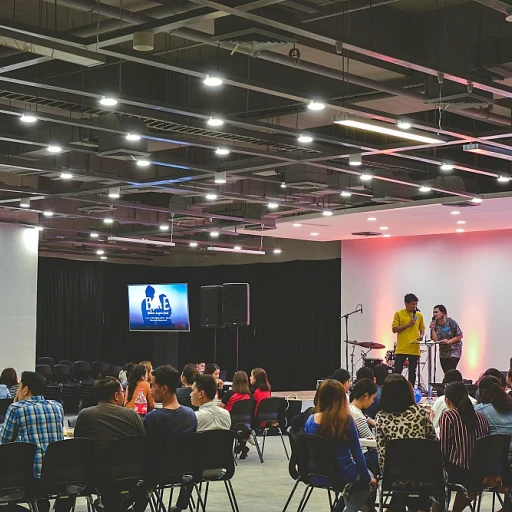Defining Backfill in Recruitment
Understanding the Role of Backfilling in Recruitment
Backfilling is a crucial aspect of the recruitment process, often utilized by organizations to maintain continuity within their teams. The concept of a backfill position usually arises from an immediate need to fill a job role temporarily or permanently vacated by an employee leaving or moving to another role. This strategy ensures that business operations continue smoothly without disruptions, allowing companies to maintain their workforce effectively.
When a key employee leaves, the organization faces the challenge of filling that void swiftly to uphold productivity. In this context, a backfill role becomes critical to bridging the gap. This can occur in various scenarios, such as when an employee takes a leave of absence, a promotion, or even departures for career advancement elsewhere.
Effective backfilling demands precision in matching the skills and experience of the departing employee. Often, companies aim to find the best fit for the vacant position by engaging in a diligent hiring process. This ensures that the transition is seamless, preserving the high standards expected within the organization.
Moreover, a strategic backfill plan can incorporate elements like cross-training current employees and leveraging management software to ease the burden on human resources. Such practices not only help in addressing short-term vacancies but also assist in long-term succession planning.
The impact of backfilling reverberates throughout the team. While it addresses the immediate need for manpower, it also influences team dynamics and can lead to shifts in role distribution and responsibilities among team members. To manage this effectively, businesses might adopt management practices that integrate new talent smoothly, ensuring that all members work together harmoniously.
Reasons for Backfilling Positions
Exploring the Rationale Behind Backfilling
The act of backfilling a position can stem from numerous motivations within an organization. When we dissect the essence of these reasons, it becomes clearer how integral backfilling is to maintaining organizational stability and continuity.
Firstly, the departure of an employee, whether planned or sudden, often sparks the need for a backfill. This might happen because an employee vacates their role for a promotion, leaves for another job, or takes extended leave. Ensuring the backfill is prompt minimizes disruption to the workflow and retains the momentum within the team.
In certain scenarios, backfilling positions serves as part of a broader succession planning strategy. By preparing a robust pipeline of internal talent who are cross-trained, organizations can effectively fill key roles without prolonged lapses in leadership or expertise. This forward-thinking approach not only adds resilience to the team but also nurtures the development of employees who are primed to take on new challenges.
On the strategic front, backfilling can be an opportunity to reassess the skills necessary for a position. When an employee leaves, it provides a chance to reassess the required qualifications and align them closer with the company’s long-term goals. This evaluation can lead to hiring the best fit for the evolving demands of the role, ensuring the position contributes maximally to the organization's success.
Occasionally, backfilling may intersect with the use of management software and payroll systems, as companies streamline hiring processes and manage the financial implications of staff turnovers. By leveraging these tools, organizations optimize their recruitment strategies, making the backfilling process more efficient.
In summary, the rationale for backfilling extends beyond merely filling a vacant position. It is a critical component of maintaining and enhancing team dynamics while planning strategically for the company’s future. It requires a nuanced understanding of organizational needs and a thoughtful approach to talent management.
Challenges in Backfilling Roles
Overcoming Obstacles in Covering Vacant Roles
Backfilling a position, although essential, does bring about a unique set of challenges, often pushing companies to re-examine their recruitment process and succession planning. Navigating these hurdles effectively is crucial for maintaining continuity and morale within the organization.
One major challenge is timing. When an employee leaves, finding a suitable backfill quickly becomes a priority. Yet, the urgency can pressure companies into rushing the hiring process, possibly compromising on the quality of the new hire. It's vital to balance the time constraints with the need to find the best employee who matches the role's requirements and aligns with company values.
Identifying the right skills is another concern. A backfill position demands more than just a replacement to fill a void; it requires a filling that aligns with the strategic objectives of the team and the organization as a whole. Ensuring that the new hire possesses the necessary skills and can adapt quickly to the company's culture is essential for a successful transition.
Moreover, backfilling roles can strain current employees. Often, team members must shoulder additional responsibilities while waiting for the position to be filled. This can affect morale, productivity, and, ultimately, retention if not managed carefully.
Finally, budgetary constraints can't be ignored. Hiring a backfill may involve costs not limited to advertising the position, conducting interviews, and potentially onboarding and training the new employee. Companies must balance these costs against the benefits of filling the role promptly.
Utilizing management software and drawing on cross-training programs can mitigate some of these issues by providing a pool of talent ready to step in when a position becomes vacant. Additionally, having a strong backfill strategy that includes succession planning prepares an organization for both short and long-term transitions, minimizing disruptions to team dynamics and overall workflow.
Strategies for Effective Backfilling
Crafting an Effective Backfill Strategy
When a team member vacates their role, the organization often finds itself grappling with the challenge of maintaining workflow and productivity. In such scenarios, a well-structured backfill strategy becomes crucial. Here’s how organizations can tactically approach this task.
Identifying the Hiring Needs
Before a vacant position can be addressed, understanding what the role entails is paramount. Analyzing the specific skills and responsibilities associated with the job will help in constructing a precise job description and in setting clear expectations for what a backfilling position will require.
Utilizing Cross-Training
Organizations should not overlook the benefits of cross-training current employees. This not only allows flexibility in filling temporary gaps but also supports succession planning and the long-term growth of team members. When employees are equipped with diverse skills, they're better prepared for short-term adjustments, minimizing the disruption when the best employee leaves.
Leveraging Technology
Modern management and recruitment software can streamline the backfilling process. By employing tools that facilitate talent management and payroll software for smooth transitions, companies can efficiently manage employee shifts and adapt to the demands of a vacant position.
Proactive Recruitment Process
Adopting a proactive approach in the recruitment process aids in building a pipeline of viable candidates. This means having a pool of potential candidates ready, which reduces the time invested in hiring when a position unexpectedly opens. Implementing best practices in candidate sourcing and maintaining a robust network can be invaluable assets.
Short and Long Term Considerations
While immediate roles might necessitate quick decisions, it’s essential for organizations to consider both short-term and long-term impacts of their backfill strategy. This includes assessing how the new hire will integrate into the team and contribute to the organization’s goals.
Coordination with Management
Management plays a critical role in the backfilling process. Open communication with team leads ensures that efforts are aligned with organizational strategies and that any transition adheres to the team dynamics. Their insight will often guide the recruitment to guarantee that the best cultural fit is found, further ensuring seamless integration.
In summary, an effective backfill strategy rests on clear communication, resourceful use of current employees, and proactive hiring practices. These efforts culminate in a process that not only fills the immediate need but sets a foundation for future resiliency and continuity.
Impact on Team Dynamics
Influence of Backfilling on Team Collaboration and Morale
Addressing a vacant position through backfilling can greatly influence the dynamics within an organization. The decision to backfill a role requires understanding its impact on the existing employees and overall team productivity.
The first noticeable effect often relates to increased workload for current employees. When a team member leaves, the remaining employees might have to shoulder additional responsibilities until the backfill position is effectively filled. This temporary increase in tasks can lead to stress or burnout if not managed properly.
Another aspect to consider is morale. When a colleague exits, it can create a gap not only in work but also in team camaraderie. Employee engagement might dip as team members adjust to the change and await a new hire. Open communication and recognition of the team's effort during this transitional period can be beneficial.
Backfilling positions can also offer a chance for growth and development. Cross-training current employees to cover tasks of the outgoing team member can enhance skills and prepare them for future roles. This involvement in succession planning encourages a supportive environment and can turn a potential challenge into an opportunity.
It's important for management to use strategic approaches such as utilizing management software and maintaining open dialogues to ensure a smooth backfill transition. Prioritizing such best practices can mitigate negative impacts on team dynamics and foster a cohesive work culture, aligning with both short term and long term organizational goals.
Future Trends in Backfilling
Emerging Trends in Future Backfilling Practices
The landscape of backfilling positions is continually evolving, and understanding the trends shaping its future is essential for any organization aiming to optimize its workforce strategies.
One of the most significant trends in backfilling is the integration of advanced management software and automation tools. These resources streamline the hiring and recruitment process, helping companies quickly identify potential candidates to fill a vacant position. By using application tracking systems, resource management platforms, and even payroll software, organizations can efficiently manage and monitor their backfill strategy.
Another emerging trend is the focus on cross-training current employees. Cross-training ensures that team members possess versatile skills, which reduces the impact felt when an employee leaves a role unexpectedly. This approach not only supports short-term backfilling needs but also contributes to long-term succession planning, allowing companies to proactively prepare for talent shifts.
Moreover, there's an increasing emphasis on continuous learning and upskilling within the organization. As roles evolve and require new skills, businesses are investing in their current employees to meet the dynamic demands of the workplace. This strategy strengthens team dynamics and enables a seamless transition when backfilling positions.
As teams become more remote and flexible, the concept of a backfill is also transforming. Virtual teams require specific considerations, such as maintaining communication and collaboration, to ensure a backfilled role aligns with the organization's culture and productivity goals.
Finally, the emphasis on employee well-being and work-life balance is reshaping backfill strategies. Taking into account employee satisfaction and happiness can lead to more effective backfilling, as a content and supported workforce is more likely to stay, reducing the frequency of having to backfill positions.
In conclusion, organizations that prioritize technology, continuous learning, and employee well-being will likely experience more success in their backfilling positions, aligning their long-term staffing and retention goals.












